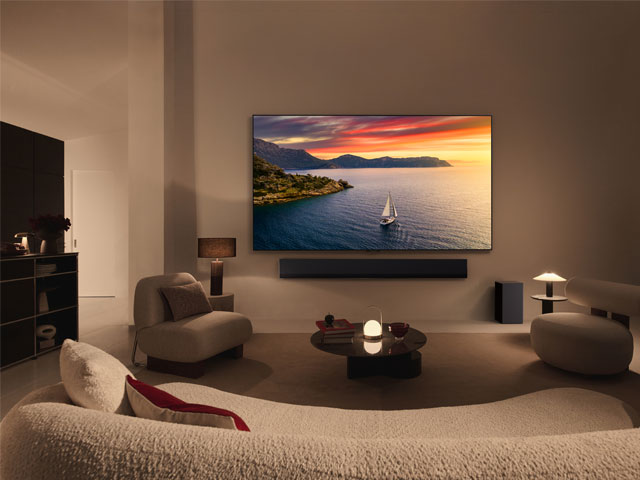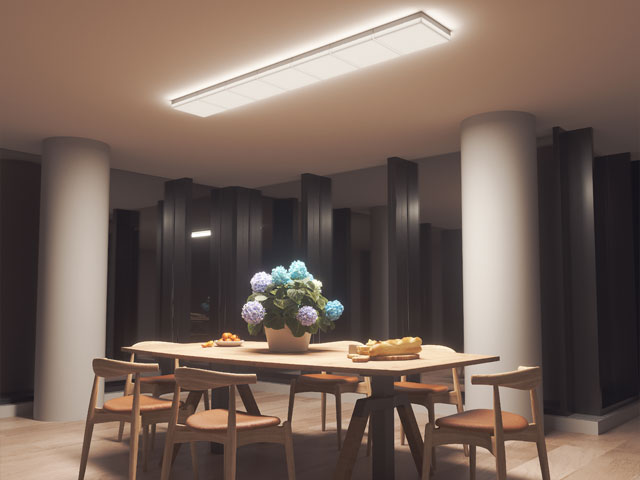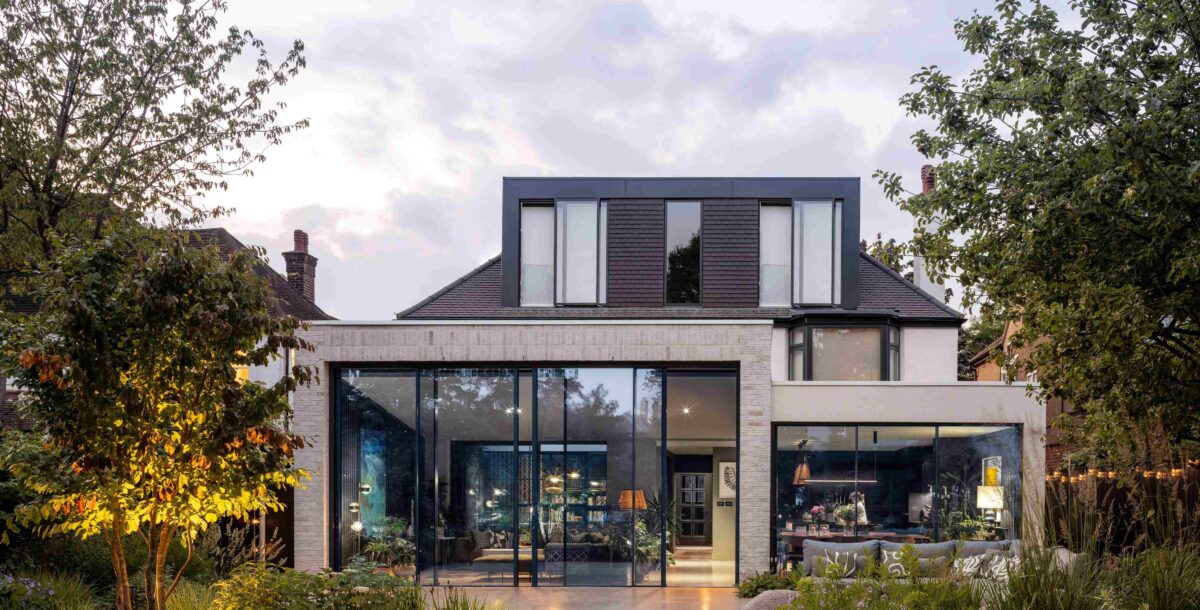What is Artificial Intelligence for the home?
How appliances, security gadgets and entertainment systems make use of machine learning
Artificial Intelligence (AI) for the home is a specific type of technology incorporated into smart devices and home appliances.
The tech gathers information (data) and processes it to learn from patterns of behaviour. This enables AI smart devices to perform tasks efficiently.
Experts have been experimenting with the potential of Artificial Intelligence since the 1950s. But it’s only since 2022 that it’s become more widely applicable.
This is down to the influence of virtual assistants such as Chat Generative Pre-Trained Transformer (ChatGPT).
ChatGPT uses machine learning, also known as generative Artificial Intelligence, to process language and produce human-like responses.
Artificial Intelligence for the home adapts
Artificial Intelligence can work with motion sensors, cameras and robotics to perform tasks otherwise requiring human thought or intervention.
AI collects huge amounts of data, processes this information and recognises patterns to predict and optimise future performance. AI continues to learn and adapt to new data.
Its integration into appliances, security devices, virtual voice assistants and entertainment systems helps make smart homes run well in accord with household routines.

These smart speakers feature ultra-wideband technology that directs the sound to wherever you are, without the need to move them. Beolab 8, £6,000, Bang & Olufsen
Get a better TV picture
All new televisions have some level of smart function. They enable wireless streaming and provide viewing suggestions based on your favourite shows.
But a TV with AI promises an enhanced viewing experience. For instance, a new feature of the LG flagship organic light-emitting diode (OLED) range offers better picture quality.

AI Sound Pro transforms stereo audio into virtual 5.1 surround sound in this 65-inch Smart 4K OLED TV. LG OLED65G45LW, £2,699, Currys
Called AI Director Processing, the technology analyses a film director’s colour scheme from the original edit. It enhances the colour of each frame, so that it’s as close to the original as possible.
Samsung includes AI Motion Enhancer Pro in its latest high-resolution 8K display TVs. This detects the type of action in different sports and enhances it frame by frame to eliminate the blur of motion.
Automate lighting
Smart light fittings and sensors can tell when a room is empty and switch off or adjust brightness according to the time of day.
The product system’s AI learns a household’s patterns of behaviour, creating automated schemes and schedules to suit. And as voice-control assistants such as Alexa from Amazon, Google Assistant and Siri gain greater capabilities, physical light switches may become completely redundant.

Ceiling-mounted panels that mimic the light coming through a skylight. The system operates through the AI Magic Scenes algorithm, which picks your choice of colour palette on voice command. Skylight starter kit with three panels, from £230, Nanoleaf
Used with sensors such as the Smart Wifi Light Sensor, AI adjusts brightness according to daylight levels and personal preferences.
AI lighting can even alter the colour temperature to match your activities – perhaps warm tones for relaxation and cooler hues for concentration.
Biodynamic systems mimic daylight to follow natural circadian rhythms and aid sleep. Brands such as Govee, Nanoleaf and Philips Hue offer set-ups for individual rooms or the entire home.
Artificial Intelligence for the home protects
Because it processes data so quickly, AI enhances the capabilities of security systems.
Surveillance cameras and motion sensors, such as those by Eufy and Philips Hue, provide real-time alerts and notifications about potential breaches.
They do this by learning the difference between usual and suspicious behaviour.

This camera uses AI to distinguish between people, vehicles, animals, pack deliveries and other motion. Secure wired camera, £130, Philips Hue
Artificial Intelligence can prevent incidents before they occur, integrate seamlessly with your existing sensors and cameras, and continuously adapt to changes.
For instance, if you alter the time you leave for – and arrive home from – work, the system recognises this and adjusts the scheduling accordingly.
Nest Aware is a subscription service for use with Google Nest products such as the security camera. It recognises the faces of people you know, notifying you when it detects strangers.
And the Visage lock from Lockly only needs your face to open the front door. It stores up to 100 faces, so it can open for friends and family, too.
Enjoy your playlist
Multi-room music streaming brand Sonos has been using Artificial Intelligence for years to make its speakers sound their best wherever you want them.
It also has proprietary AI voice control and uses algorithms, as does streaming service Spotify (spotify.com), to create more authentic personalised playlists.

This wireless speaker uses AI to recognises the type of content playing, optimising the sound so every detail is audible, even at low volume. Music Frame £499, Samsung
Bang & Olufsen makes luxury televisions, speakers and headphones. It includes AI in its premium product range to optimise sound quality and adjust settings based on user behaviour.
Enabling integration with smart home systems, it even simulates immersive listening, such as surround sound, with standard stereo speakers.
The Beolab 8 speaker uses Active Room Compensation.
This feature acoustically maps the room around it, applying a clever filter that tweaks sound depending on the speaker’s placement. The aim is to always keep you in its acoustic sweet spot.
Artificial Intelligence for the home anticipates
Virtual voice assistants are ever improving – even sounding more human.
That’s because AI analyses billions of requests from across the globe and learns natural speech patterns.
There are currently an estimated 17 billion wirelessly connected gadgets for Alexa, Google Assistant and Siri to integrate with.
Alexa alone has more than 130,000 skills using 30 different machine-learning systems.

All Alexa-enabled devices offer the latest AI voice control, but only the latest Echo Show has a 15.6-inch full HD (1080p) display with Fire TV built in. This means you can control smart home devices, update the diary, make video calls and watch streaming services from a single device. Echo Show 15, £300, Amazon
Aside from sounding natural and performing more reliably, virtual assistants anticipate what you want.
Turn off your alarm and Alexa might switch on your bedside light, play the news and start up the coffee machine.
LOOKING TO THE FUTURE
Deborah Honig from Samsung on the continuing impact of Artificial Intelligence for the home
- Can appliances understand what we want and need?
‘In a connected home, AI learns from your everyday routines to simplify or automate daily chores according to your preferences.’ - What’s the most impressive use of AI you’ve seen?
‘It’s hard to pick one! The AI Energy Mode on the Samsung SmartThings app advises when to use your appliances to save the most energy. I also love that AI recognises the products in my fridge and tells me when food items are close to being out of date.’ - What’s coming next?
‘I can see AI becoming more accepted as more companies introduce its capabilities and homeowners experience the benefits. Looking ahead, there’s limitless potential as it has such exciting possibilities, able to improve our lives and take technology to the next level of usefulness and connectivity. There are hundreds of different types of disciplines which form AI – from reactive, deep and machine learning through to self-awareness – which currently only exists hypothetically.’









